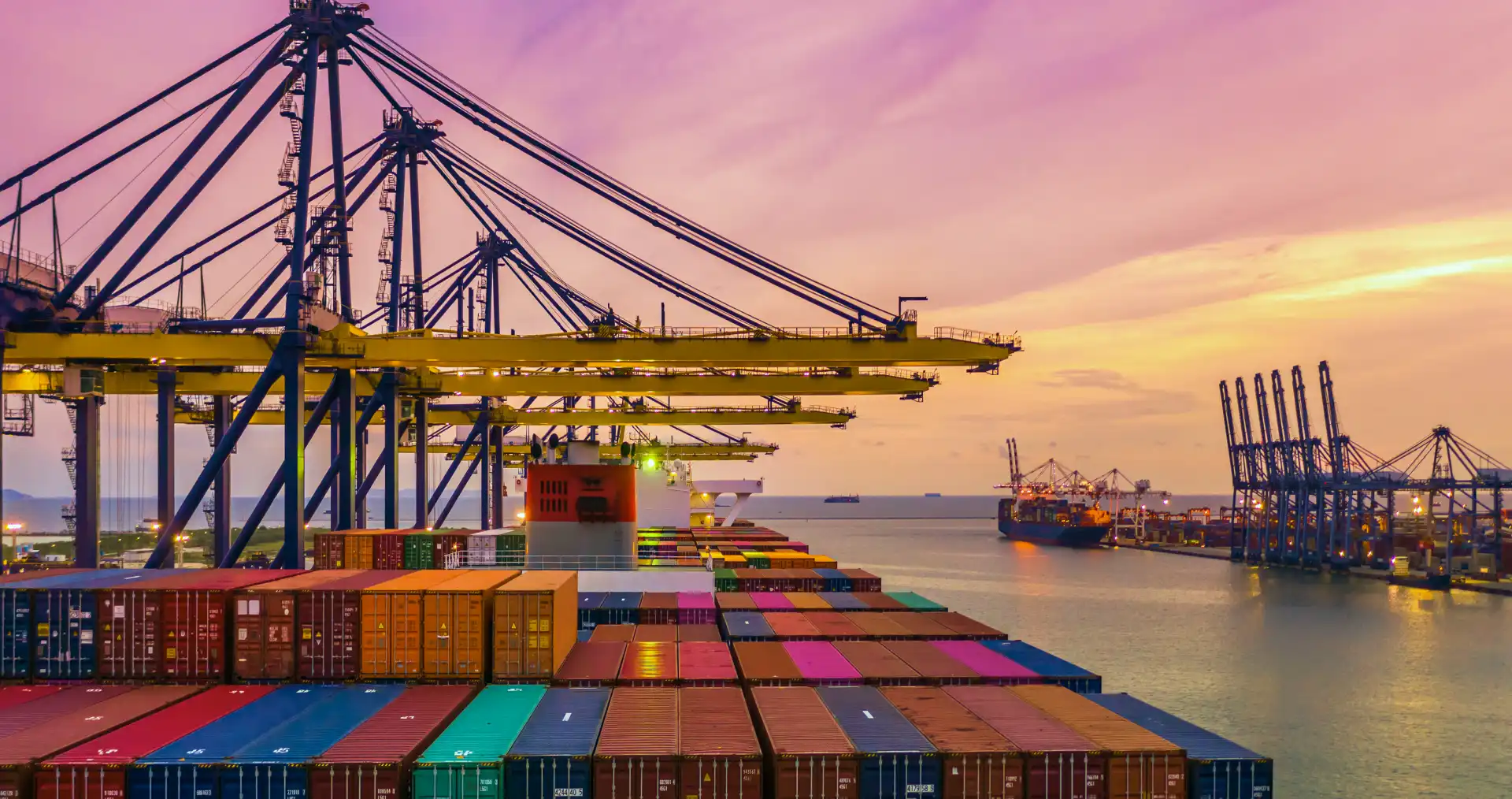Modern CX Strategies for B2B Commerce
May 30, 2024 • 3 Minute Read • Thomas John, Commerce Practice Lead


Tariffs are creating major disruptions throughout global manufacturing and distribution. For B2B businesses, this chaos is as destabilizing as COVID-19 and just as hard to predict.
For the first time, tariff line items are on materials invoices. This shows that policy is now real and impacts business operations, budgets, and bottom lines.
The real problem is the sheer uncertainty in every news cycle. Tariff rules can shift overnight, and one week's business strategy may become a liability tomorrow.
As a result, making financial decisions for your digital commerce strategy, consistent planning, and execution become extremely challenging, to say the least.
In this environment, aligning technology investments with business goals is urgent and complex. Leaders must think carefully about each move and its potential return on investment (ROI). They know that flexibility, speed, and real-time data are essential competitive advantages.
In such a volatile climate, those relying on fixed pricing models or traditional sourcing strategies will be swept away. Data-driven adaptability is now a competitive edge, and companies without flexible platforms, integrated systems, and real-time insights are already losing ground.
As trade policy evolves, B2B decision makers must ask: Are we ready and able to pivot—strategically, digitally, and operationally?
Old platforms are slow and expensive to maintain. They also lack the flexibility needed to meet today's customer expectations.
The call for agility is loud and clear; however, for many B2B companies, the barriers to agility aren't tariffs—they're internal.
Over the years, acquisitions and growing technical debt have left many firms with a maze of siloed data, redundant systems, and inconsistent or conflicting business processes.
For example, legacy enterprise resource planning (ERP) systems, outdated customer relationship management (CRM) systems and pricing engines that run on-premise still power day-to-day operations, making quick shifts nearly impossible.
"Adapt or lose market share—that's the choice we're all facing," says Chris Petrini. He's the Chief Supply Chain Officer at Midwest Supply Co., an Ohio-based industrial company. "And we don't have the luxury of time."
So, how can B2B companies keep pace during times of disruption when they're still struggling to streamline their internal operations?
In today's tariff environment, the ability to make data-driven decisions quickly is a game-changer. AI helps distributors move from reactive pricing and forecasting to proactive planning, turning uncertainty into opportunity.
For example, AI-powered tools like Coupa can find small trends in customer demand. These tools detect trends before they appear in regular sales reports. That means distributors can use these insights to preemptively adjust sourcing, implement better pricing strategies, and achieve stronger margins.
Additionally, AI can directly support sales teams. It can identify high-risk accounts and prioritize outreach. It can also create scripts to help sales teams explain price changes with data support.
AI's potential is only as strong as the data that powers it. Yet many B2B digital commerce manufacturers and distributors still deal with disparate systems and fragmented data models.
Different teams use different tools and often don't have centralized data governance. This leads to inconsistent data models across business units and brands.
That's a fast track to slow decisions and missed opportunities.
To move faster, you need to standardize data across functions, including sales, inventory, purchasing, and finance. Achieving this involves setting and sticking to consistent rules for customer records, product SKUs, pricing logic, and discounting practices.
Then, establish a universal data taxonomy and integrate systems into a centralized data lake or warehouse. When your systems talk to each other, the ripple effects of pricing or supply chain changes become clearer.
This holistic approach to digital commerce helps organizations predict pricing and supply chain effects. It reduces errors, boosts collaboration, and allows for accurate analytics. The outcome is organization-wide agility, rather than limited, isolated improvements.
A clean data foundation is what allows for scalable transformation. Start there to build real momentum.
Pricing optimization matters, but it's only part of the equation. When you can't pass rising operating costs on to customers, operational efficiency becomes your bottom line's best friend.
AI and modern digital platforms can automate labor-intensive tasks, reduce cycle times, and eliminate redundancies. That means cost savings without touching your pricing.
Here are a few examples of this efficiency in action:
Even small improvements—like saving a few minutes per task, making fewer mistakes, or improving workflows—can add up to big savings and help balance tighter margins.
A holistic digital view of margin management treats pricing, sourcing, and operations as connected levers rather than isolated problems.
By adopting a systems mindset, firms can enhance their tech capabilities and strengthen resilience against tariff-related disruptions.
Tariffs, trade wars, or economic downturns require systems that can flex and evolve quickly, especially to support AI enhancements.
We're seeing more B2B companies shedding monolithic, custom-built legacy platforms. Instead, the future belongs to modular, cloud-based architectures that integrate seamlessly with other tools in your ecosystem.
A composable tech stack lets you add new tools easily. This includes AI-powered pricing engines or customer data platforms. You can do this without major changes to your platform. Additionally, APIs allow developers to integrate new solutions with existing systems easily.
Cloud computing and cloud infrastructure help remote teams and global operations models. It keeps the business running, no matter where a crisis occurs.
The bottom line: the ability to grow and connect your systems smoothly is your business's best protection against the next major disruption.
Change can bring on panic, especially when it impacts the bottom line. Tariff disruptions and price hikes heighten tension internally and with customers. That's why clear, confident communication that acknowledges this emotional context is critical.
In moments of disruption, clear and consistent communication is not just about fixing problems. It's also a chance to strengthen your brand.
A one-size-fits-all approach won’t cut it in a tariff-fueled economy. Smart companies are evolving their approach. They're redesigning their supply chains and focusing more on customers and user experience. This helps them reduce risk and protect profits.
Start with supply chain diversification. Relying too much on one region can make you vulnerable to tariffs. Consider strategies like:
These tactics don’t just reduce tariff risk—they also boost responsiveness and business continuity.
At the same time, businesses shouldn't treat all customers equally during disruption. Segment your customer base based on profitability, strategic value, and tariff sensitivity.
High-value customers may justify margin sacrifices or special service guarantees. Price-sensitive, low-margin customers might require different messaging or tiered solutions. Let your customer segmentation strategy guide how you deploy discounts, supply priorities, or service levels.
Together, spreading out your supply sources and focusing on key customers creates a dual-lever strategy for margin protection and operational resilience in a tariff-rattled market.
You can't improve what you don't measure. Once mitigation strategies are in place, leaders must track the right success metrics. This helps them see if their changes are adding business value.
These KPIs give you visibility into whether your strategy is working. They measure not only financial results but also long-term agility and resilience. If tracked consistently, they also inform the ROI of digital investments made under the pressure of tariff disruptions.
Today's tariff challenges force B2B businesses to innovate to stay resilient. Tariffs may be the current disruption, but they won't be the last.
To survive and thrive, manufacturers and distributors need a dual-focus roadmap:
Delayed action carries a cost. Even with a pause in some tariff rollouts, every day without a plan narrows your options and eats at your margins.
The most effective leaders won’t wait to respond. Instead, they'll act with urgency, clarity, and the courage to build smarter, more adaptable businesses now.
The next disruption isn't a matter of if, it's when. The question is whether you're prepared with an adaptable, growth-centric digital strategy.
